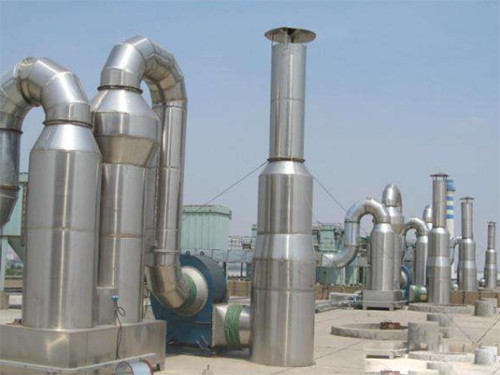When designing flue gas desulfurization equipment, the materials available for use are: carbon steel, glass fiber -reinforced plastic (GI) and stainless alloys with organic anticorrosive protection. The principle of selecting these materials is technical adaptability, such as corrosion, scouring, heat resistance, processability and price. In the flue gas desulfurization washing device, the use of stainless steel and nickel -based alloy is used as structural materials. They have many advantages compared with GI or organic anticorrosive materials:
1. No life span;
2. No heat diffusion;
3. Anti -brush;
4. No temperature limit;
5. The risk of no mechanical damage (simple maintenance).

Because there is no life limit, it is economical to use stainless steel alloy. In other words, the use cycle is longer than the entire life of the smoke -gas desulfur. Instead, the organic anticorrosive material used in flue gas desulfurization equipment changes with the characteristics of the flue gas desulfurization process, and must be updated within a certain cycle. On the other hand, choosing stainless steel alloys is the characteristic requirements of flue gas desulfurization parameters, and their materials and manufacturing costs are also low. The application of stainless steel alloys in flue gas desulfurization equipment The corresponding stainless alloy should be selected according to different corrosive media in each area of the absorber.
The stainless steel alloys used in flue gas desulfurization can be divided into four groups. Standard Austeen stainless steel, Quano austenite stainless steel, super Austeenan stainless steel, and chromium -containing nickel alloys containing chromium and molybdenum. Standard Austeen Stainless Steel is a sub -stable 18CR10NI steel with a small amount of added elements. Because their anti -point erosion and anti -gap corrosion capacity is too low, they are usually not used in flue gas desulfurization, and the anti -erode volume Pre -volume Pre -volume Pre -volume Pre -volume Pre -volume Pre propel to be less than 20.
The flue gas enters the washing device through the entrance of the flue gas. The corrosion environment inside the entrance is formed by the sulfuric acid and chloride produced by the flue gas. The first washing was carried out in the first cycle, and this cycle was also called a cold -cold cycle. In this cycle, the temperature of the flue gas is cold to the process temperature of 45-70 ° C through the spray-spray-free cold fluid, forming saturated flue gas and pre-separation of harmful substances. At this time, hydrochloric acid analyzes it. Boxes and chloride are high). After the circular channel between the smoke through the washing wall and the collecting plate, it enters the second cycle, also called the absorption cycle. Here, most of SO2 and limestone react. Due to the high pH value and low chloride content in this area, the corrosiveness of the absorber solution is low. After the absorber solution is collected in the disk, the flowing people absorbing liquid supply box. The flue gas is purified after saturated the aquatic solution of the dehumidifier.
The entrance to the flue gas is a transition area between the flue and the washing device. It is affected by two types of corrosion: one is the corrosion of sulfate condensed in the flue gas; the other is the chloride corrosion in the solution. The main idea in the design is to resist sulfuric acid corrosion at the temperature of flue gas. By studying the high -line charts such as corrosion, the only material that can be used is NI -CR -MO alloy. It is determined to use C 1 276 and 59 alloys. If the heat exchanger is used to cool the flue gas between 90 ° C and the dew point temperature of the acid (the temperature range of the dew point is 120 to 135 ° C), that is, the nickel -based alloy may also be corroded.
Through research on the previous smoke desulfurization devices, the changes in the structure reduce the risk of erosion at the bottom of the plate. The principle of material selection will also change. Because super Auspace is slightly more expensive than 904L alloys, but it has high corrosion resistance, 904L alloys are replaced by Super Austeine. Only 625 alloy in the cold device solution is equivalent to the corrosion resistance of the super Austrian steel, but its price is almost twice as much as the superinosite. So since 1996, the two materials of 904L and 625 alloys were canceled from NOLL -KRC's material selection criteria.
Summarize the application of the above stainless steel in the smoke desulfurization, which can determine the new material selection criteria. The corrosion conditions of the flue gas desulfurization solution are:
1. The temperature is between 50 ° C (non -tobacco coal power plant) and 70 ° C (lidal coal power plant);
2. The pH value in the cold device cycle is between 4 and 5;
3. The pH value of the absorber cycle is 6.
With the reduction of the investment cost of the washing device, more and more people use the structural materials for the austenite stainless steel and nickel -based alloy as the flue gas desulfurization washing device. The new guidelines for selecting materials have taken a big step in the direction of stainless alloy. In addition, the application of stainless steel or nickel -based alloy plating and lining plate can also reduce the cost of the material. Compared with organic materials, stainless alloys are rarely maintained.
